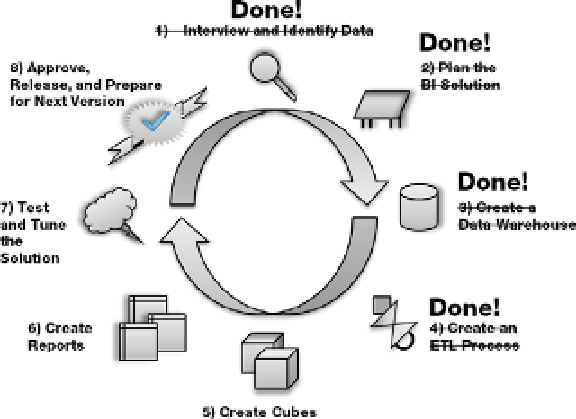Database Reference
In-Depth Information
Listing 8-11.
Backing Up the Filled DWPubsSales Database
Backup Database DWPubsSales
To Disk='C:\_BISolutions\PublicationsIndustries\DWPubsSales\DWPubsSales_AfterETL.bak'
With Init
in this exercise, you tested the ssis package that filled the dwPubssales database. ssis can be challenging
to master, but with practice you will find it is a superior tool for performing ETl processing.
■
Remember, if you had any trouble completing this exercise, you can always compare your package to the
authors' completed version in the C
:\_BookFiles\Chapter08Files\PublicationsIndustries folder
.
optionally, you can restore the filled database using the sQl database backup file:
C:\_BookFiles\Chapter-
08Files\FilledDWPubsSalesDB.bak
. we also included a sQl code file to help you restore the database from
the backup file called
C:\_BookFiles\Chapter08Files\RestoreDWPubsSalesDB.sql.
l.
Note
Moving On
At this point, a BI solution developer has a choice to make: start working on reports or add OLAP cubes to the
solution. The decision involves weighing a number of factors, which are best determined by what would be most
logical for the particular solution you are working on. As you can see in Figure
8-26
, we have chosen Create Cubes
as our next step to the process.
Figure 8-26.
The ETL process is complete
In Chapter 9, we are going to cover how to create OLAP cubes using Microsoft's SQL Server Analysis Server
(SSAS). Once you see what cubes do and how you create them, you will have a much better chance to make the
correct decision process for your own BI solution, namely, about whether to include them in your solution or
move past them and start working directly on preliminary reports.



